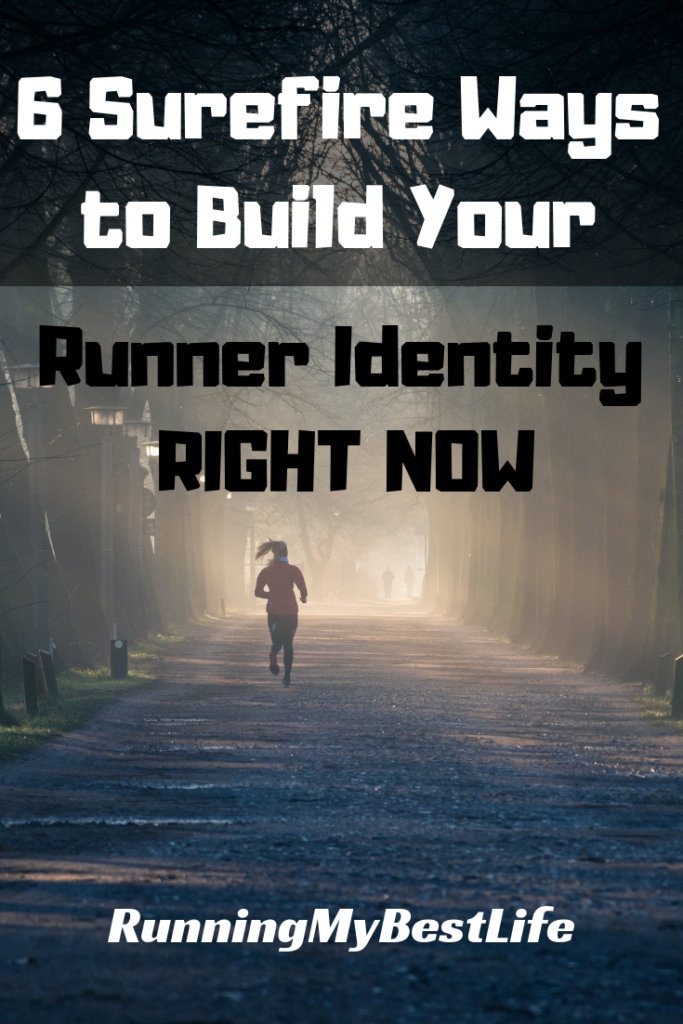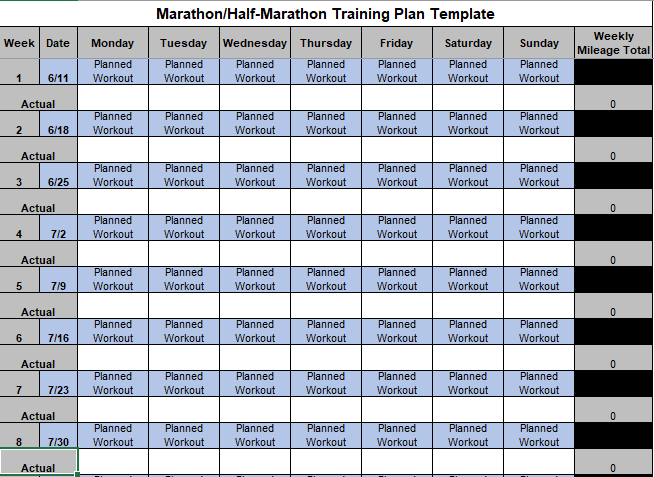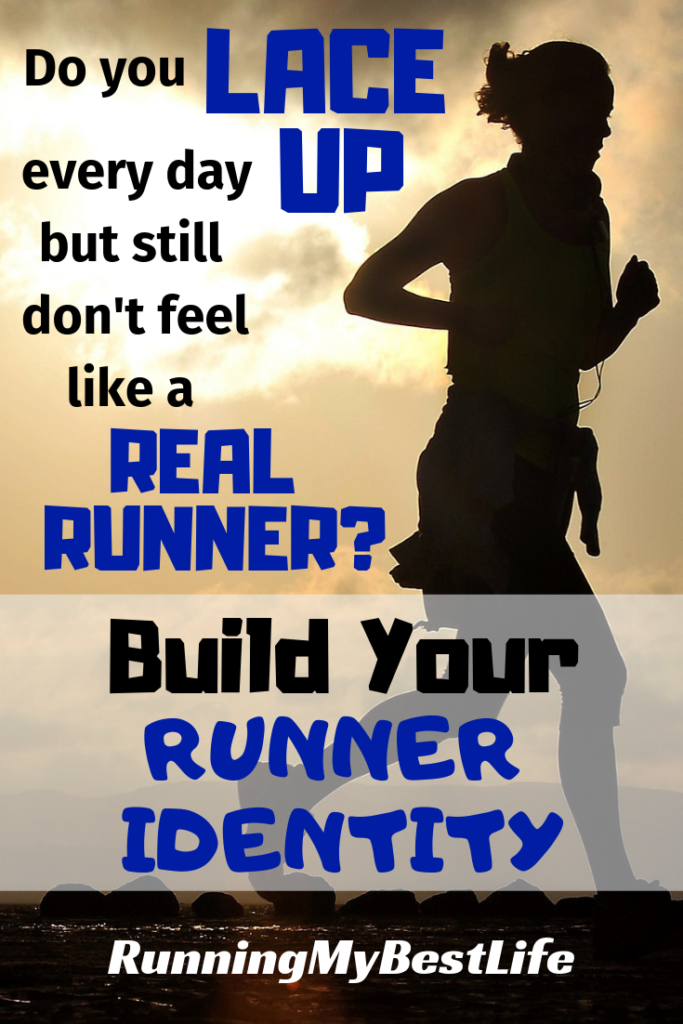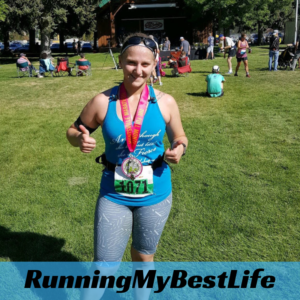Too many runners fail to embrace their identity as a runner.
When someone asks you if you are a runner, you off the label:
“Well I run, but I’m not really a runner.”
Why is this?
For most, it’s because they think they need to meet certain qualifications to be considered a runner.
If you’re hesitant to declare the runner label, first read When You Can Call Yourself a Runner.
Once you accept that you are, in fact, a runner, then please read on…

My Runner Identity
I was one of those people who ran several miles per week, entered 5ks and 10ks, yet hesitated to call myself a runner because I was slow and I tended to “only” run a couple times per week.
Then, I did something crazy. I decided to train for a half marathon.
In the process of training for (and completing) my first half marathon, I transformed my identity into a proud runner. I might not be that fast, but I sure as hell am a runner.
Looking back, there were several things I did as I became obsessed with training and running that helped transform my identity.
These methods are common, and very effective.
What you can do to build your runner identity
1. Set a running goal
This could be a trip to the end of the block without stopping, running continuously for 30 minutes, or signing up for a race. Runners set goals put in the effort to achieve those goals. This will help foster your runner identity.
I encourage you to set a goal that scares you just a little. It should be big enough to stretch you as a person and a runner, but it should also be achievable within a reasonable timeframe.
Last year, my one major goal was to run a half marathon. This year, I plan to run 3 half marathons.
2. Follow a training plan and track your progress.
You are more likely to run the miles if you have a plan for each day of the week.
Following a training plan will tell you when you can safely push yourself, and when you need to take a break.
If you need help finding a plan and tracking it, head over to my post When to Start Half Marathon Training, where I detail several sources of free training plans and how early to start training.
After you get a plan, you need to be able to track your progress on that plan. I created a spreadsheet where I can input my training plan, and track the actual workouts completed each day. It even tracks total weekly mileage!

I keep my personal copy on my Google Drive, so I can easily update it from my phone after each workout.
3. Buy some cool running gear
This isn’t a license to go crazy. I hesitate to buy stuff I don’t actually need, which is part of how my husband and I were able to become debt-free at the age of 23.
You definitely will need a good pair of running shoes. If you can only buy one thing, buy running shoes from a reputable store where you can try them on and have them watch you run. This will be well worth your money.
If you have some money to splurge, then buying running gear can be a great way to build your runner identity and feel more like a runner. Here are some ideas:
- Running belt or vest to carry fuel and hydration on long runs
- Moisture wicking clothing
- Quality Headphones
- Compression socks
- Comfortable, quality sunglasses
- More running shoes
4. Read great running books
I have a confession to make…I’ve never formally had any type of running coach. I’ve been self-taught from the beginning. At first, I was just running a few miles here and there to prepare for my physical training test annually.
Then, I decided that I needed to run more if I was ever going to be good at running. My full story of how this process went is over on my about page, but I haven’t ever had a coach. At least not in person.
My coach of choice is books. When I decided that I wanted to get better at running, I started reading as many books as I could find on running. They taught me basic and advanced principles of training, nutrition, weight management, fueling, and racing. Even more, several books provided inspiration and the “why” behind running.
Here are a few of the great running books I’ve read:
- Run Fast by Hal Higdon
- Born to Run by Christopher McDougall
- Your Best Stride by Jonathan Beverly
- Run Strong, Stay Hungry by Jonathan Beverly
- Let Your Mind Run by Deena Kastor
- Racing Weight by Matt Fitzgerald
- Run Fast, Eat Slow by Shalane Flanagan
- The New Rules of Marathon and Half Marathon Nutrition by Matt Fitzgerald
- Running the Edge by Adam Goucher and Tim Catalano
- 80/20 Running by Matt Fitzgerald and Robert Johnson
- Running is My Therapy by Scott Douglas
- The Runner’s Brain by Dr. Jeff Brown
I’m still an avid reader, because there is always more to learn in pursuit of continuous improvement. Reading running books is a very effective method of building your runner identity.
5. Commit to running for a healthier life, not just for one race
When I started training for my first half marathon, one thing was clear. I committed to running not only for this race, but for a healthier life.
Running was to become part of my lifestyle, not just a 3-month stint to check off a bucket list item. This was one of the reasons I also joined a year-long challenge to make running a lifestyle habit. It changed my life in more ways than just losing weight, some of which I really wasn’t expecting.

6. Join a running community
Training for your running goal can be tough. You will need support and encouragement along the way. The best way I’ve found to stay motivated is to stay plugged into running communities online.
One thing you might start to recognize as you build your runner identity is that we’re all a little crazy, and we’re completely embrace that!
There are some awesome social groups available.
Here are a few groups I love being a part of:
Run the Year 2019 (Must be a paid member of the RTY 2019 Challenge)
I will spend most of 2019 in training for one of the three half marathons on my calendar, so I will be right there with you in training this year!
How do you plan to build your runner identity?
Be sure to like my page on Facebook, follow me on Pinterest or Instagram, and become part of the community.

Run Happy,
Alexis
- Nailing Your Marathon Hydration Strategy: A Comprehensive Guide
- Conquering Marathons in the Cold: A Comprehensive Guide
- Harnessing the Power of Technology for Successful Marathon Training
- Mastering the Marathon: The Ultimate Guide to Nutrition and Training
- Ultimate Guide to the Top 5 Running Shoes for Beginners in 2023
About Me: I’m Alexis, Founder of RunningMyBestLife! I am an avid recreational runner, half marathoner, wife, dog mom, busy professional, downhill skier in Northern Utah. My mission is to help new enthusiasts fall in love with the sport of running. I believe that running is a catalyst to taking control of your life and living your best life by design. Learn More –>